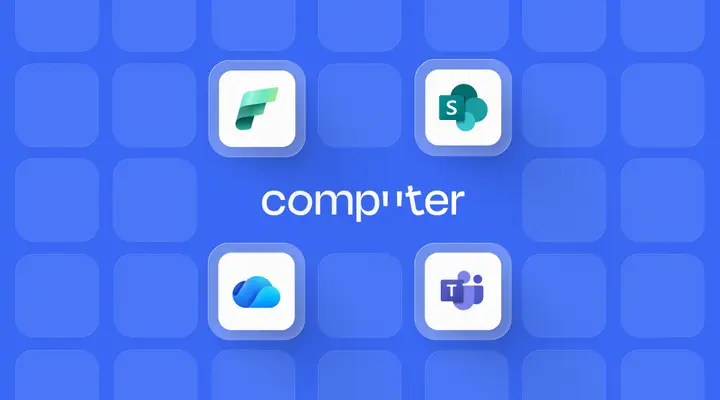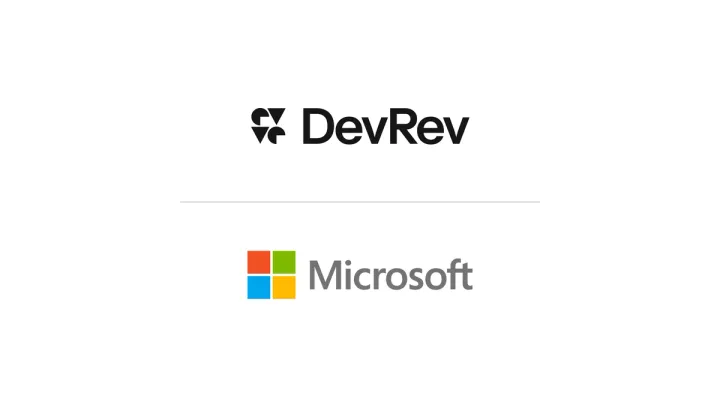The energy at Effortless NYC was incredible. We welcomed F5 and Bill, highlighted success stories from Uniphore and Fame, and heard from industry legends Vinod Khosla, Dev Ittycheria, and Swamy Kocherlakota.
We also addressed an uncomfortable truth: 95% of enterprise AI pilots are failing.
The problem isn’t the AI models. The problem is that our industry has optimized for flashy demos while ignoring the hard work of deployment – and leaders aren’t focused on how integrating AI will not only change the way we work, but the way we assimilate AI into workplace structure, culture, and norms.
As our CEO, Dheeraj Pandey, said on stage, the most dangerous question in business today is, “How many people can I replace with AI?”
That’s based on a story of AI replacement, and it’s the wrong question.
The real story of technology is expansion and integration. But how?
At Effortless, we unveiled our answer: Computer, an AI teammate meant to be integrated fully into your team, built on a new architecture, with new tools. And built for production, not demos.
We believe that AI works best when it’s designed to augment and amplify human judgment, not replace it. That teams will expand, not contract. And that AI leads to more opportunities and more growth, so long as we focus on the right question: how do we transform our businesses to become AI-native?
Here’s a recap of what went down in Manhattan.
The “Long Horizon Problem” and Computer
Dheeraj explained that most AI strategies are failing because they’re flawed, and built on old, broken foundations. Companies are trying to plug agents into their fragmented landscape of dozens of different apps.
This leads to what we call the “Long Horizon Problem.” After just three to five steps of reasoning across disconnected systems, a federated agent becomes unstable, loses context, and fails.
That’s unacceptable for a real agent – one that can act like a teammate and work alongside your people. A real agent isn’t a simple chatbot with RAG, or something executing a simple workflow.
A real agent needs real agency. So it can work in a reason-and-act loop. Federated agents just can’t do that.
The solution has to be a better foundation. A new architecture. You can’t build a reliable AI strategy without a unified data core. A shared brain for your team.
This new architecture is Computer, which is built on our two core, patented technologies:
- Computer AirSync – a real-time sync engine that intelligently maps and unifies your data from across all your systems.
- Computer Memory – our permission-aware knowledge graph that acts as the “shared brain” for your agents and people.
Early customers are already realizing how Computer benefits their teams since it launched in September.
Today in New York, we also showcased three new core capabilities – alongside a glimpse of the future that’s coming to Computer very soon.
1. Conversational analytics: talk to your data, no analysts required
With Computer, we’ve addressed one of the biggest failures of “natural language to SQL” tools, by creating a true conversational analytics capability.
As detailed in our blog post, most tools can generate syntactically correct SQL, but far too often the answers are semantically wrong. They don’t understand that your company’s “Commit Date” is stored in the database as “Break Date.” Or that “P0” in one tool means “Urgent” in another.
Computer operates at the “semantics” layer. Because AirSync brings data into Computer Memory, it learns your business’s unique language. When you ask a question, it understands your meaning, and can perform the complex joins automatically, So you get an accurate, conversational answer, not a faulty SQL query.
2. Human-in-the-loop actions: Computer prepares, you decide
Most AI tools act first and notify you later, creating errors you have to spend time fixing. This is reckless, and wasteful.
We’ve built Computer differently. Our new human-in-the-loop (HITL) actions are built on a simple premise: Computer prepares, you decide. It gathers context, assembles the details, and proposes a path forward. Then, you make the call. You see exactly what the AI plans to do – and you can approve, modify, or reject.
For example, when an email comes in about a new lead, Computer asks, “This looks like a qualified lead, should I create an opportunity?”
You can approve it instantly, adjust the deal size before creation, or reject it if it’s not a real lead. This gives you all the speed of AI, with none of the anxiety.
3. Agent Studio: AI building for all
For too long, building a custom AI agent required a team of specialists. Computer Agent Studio changes that, making agent building accessible to everyone, whether you’re technical or not.
The key is our “skills” framework. Instead of asking an agent to juggle four separate tools for ticketing, notifications, CRM, and scheduling, Agent Studio uses skills. For example, a single “Escalate customer issue” skill packages all those tasks into one reliable, composable capability that can be reused again and again.
Agent Studio treats agents as infrastructure, not experiments. You get the power of custom AI, with the control you need for production:
- Gradual rollouts and testing with real traffic.
- Safe sandboxed environments for experimentation.
- Complete observability to see every decision an agent makes and why.
This takes a capability that was only available via our forward-deployed Applied AI team and puts it squarely in your team’s hands. So now you can customize Computer agents for your unique company, team, and customer needs.
As shared by Michael Machado, our CVP Product and Brand: one financial services firm already used Agent Studio to build a custom agent to track escalation risk – all without any engineering support.
Our vision: proactive, collaborative “Team Intelligence”
Michael closed out our product keynote with an exciting peek at where we’re heading – our vision for the future of Team Intelligence, where Computer becomes a proactive, collaborative teammate. The demo showed a new, complete workflow that’s coming to Computer very soon. This is exciting stuff.
From reactive to proactive. Michael starts his day with Computer prompting him with a personalized summary of what needs his attention. He spots a trend: customers are asking for better AI performance insights. He asks Computer who’s best suited to help – and since Computer knows all about DevRev, our teams, and their workloads, it suggests Tom and Amisha.
From singleplayer to multiplayer. Rather than requiring Michael to reach out to Tom and Amisha via email or some other surface, Computer invites them into a new, collaborative team space. There are now four players in the room: Michael, Tom, Amisha, and Computer. Just like Google Docs did for writing, and Figma did for design, Computer moves AI from a solitary endeavor to a collaborative one. (We told you this was exciting.)
Computer as a teammate. Computer instantly catches Tom and Amisha up with a focused summary – no copy/pasting or forwarding old threads. The team just works with Computer. Tom mentions a report, and Computer pulls it in, and summarizes it. Amisha asks for more signals, and Computer checks all channels (surveys, tickets, email) and adds them to the conversation. Once they agree on a path forward, they ask Computer to “set up a new feature kick-off.”
Seamless. Simple. Effortless.
This is the future of work. Not a world without people, but one in which we’re more integrated with AI. A world in which technology (finally) amplifies our collective intelligence.
The Team Intelligence era is here, and it’s built on integration, trust, and a platform designed for your entire team.
Computer: AI that (really) works.





